College Sports
MCWS Final down, but among most-watched in best-of-three era
With the series ending in a sweep, the Men’s College World Series Final was no match for last year’s three-game set. The two-game LSU-Coastal Carolina Men’s College World Series Final averaged 2.50 million viewers on the ESPN networks, down 11% from last year’s three-game Tennessee-Texas A&M series (2.82M) but the most-watched sweep since the final […]

With the series ending in a sweep, the Men’s College World Series Final was no match for last year’s three-game set.
The two-game LSU-Coastal Carolina Men’s College World Series Final averaged 2.50 million viewers on the ESPN networks, down 11% from last year’s three-game Tennessee-Texas A&M series (2.82M) but the most-watched sweep since the final shifted to a best-of-three format in 2003 (ten total series).
Sunday’s Game 2 averaged 2.78 million viewers across ABC and ESPNU, down five percent from Tennessee-Texas A&M Game 2 last year (2.92M) but still the sixth-largest audience for an MCWS game on the ESPN networks.
Facing breaking news coverage, Saturday’s Game 1 averaged 2.18 million on ESPN and ESPNU — down 4% from last year’s opener (2.26M).
This year’s MCWS Final ranks as the fourth-most watched in the best-of-three era. LSU has played in three of the top four, with the Tigers’ 2023 win over Florida (2.86M) and 2009 win over Texas (2.76M) ranking first and third respectively. (Last year’s series, which ranks second, is the lone exception.)
The complete Men’s College World Series averaged 1.21 million viewers, down 22% from last year (1.56M) but still the third-largest audience for the event since 2011 — behind only last year and 2023 (1.65M). The MCWS averaged fewer viewers than the Women’s College World Series earlier this month (1.3M), though the two-game MCWS Final outdrew the three-game WCWS Final (2.2M).
The full NCAA baseball tournament averaged 537,000 viewers.
College Sports
2024 SJC Field Hockey Season Review
Story Links STANDISH, Maine – Under the direction of first-year Head Coach Theresa Arsenault ’14, the Saint Joseph’s College field hockey team posted a 10-11 overall record and a 7-5 mark in Great Northeast Athletic Conference (GNAC) play in 2024, earning the #5 seed in the GNAC Tournament. REGULAR SEASON: The 2024 […]

STANDISH, Maine – Under the direction of first-year Head Coach Theresa Arsenault ’14, the Saint Joseph’s College field hockey team posted a 10-11 overall record and a 7-5 mark in Great Northeast Athletic Conference (GNAC) play in 2024, earning the #5 seed in the GNAC Tournament.
REGULAR SEASON:
The 2024 campaign got off to a rocky start, as the Monks dropped their first three games by a combined 8-0 margin. The breakthrough came on September 14th with a decisive 8-0 victory over conference foe Elms College, marking the first collegiate coaching win for Arsenault. Junior Kienna Haley (Scarborough, Maine) led the SJC offensive attack with three goals in the win over the Blazers.
Saint Joseph’s then endured back-to-back overtime setbacks against the University of Southern Maine (4-3) and Colby-Sawyer College (3-2) before catching fire, rattling off four straight GNAC victories over the University of Saint Joseph (3-2), Regis College (4-0), Anna Maria College (2-0), and Dean College (1-0) to even their record at 5-5 by October 5th.
The Monks split their next four contests, defeating Albertus Magnus College and UMaine–Farmington while falling to New England College and nationally ranked Babson College. Senior Abbie Jacques (Mount Vernon, Maine) netted a career-high four goals in the 8-0 triumph over the Falcons.
One-goal losses to GNAC rivals Johnson & Wales University (2-1) and Lasell University (1-0) were followed by a pair of wins—2-1 over Rivier University and 6-0 over non-conference opponent Gordon College—bringing the team to 9-9 on the year. Juniors Maya Waryas (Bellows Falls, Vt.) and Sadie Tirrell (Naples, Maine) tallied two goals apiece in the 6-0 victory over the Fighting Scots.
POSTSEASON:
After closing the regular season with a 3-0 loss to Simmons University, Saint Joseph’s rebounded in the GNAC Tournament quarterfinals, avenging their earlier overtime defeat to Colby-Sawyer with a 2-1 road win over the fourth-seeded Chargers on November 2nd. Freshman Zoey Lailer (Limington, Maine) scored what proved to be the game-winning goal in the 21st minute.
Four days later, the Monks traveled to top-seeded Johnson & Wales for a semifinal showdown. Deadlocked at 1-1 early in the third quarter, Saint Joseph’s surrendered the go-ahead goal in the 39th minute, as the Wildcats went on to claim their fourth consecutive GNAC Championship.
NOTEWORTHY INDIVIDUAL PERFORMANCES:
- Haley enjoyed a breakout season with 13 goals and two assists for 28 points. She led the team in goals and total points during her junior campaign.
- Jacques tallied 10 goals and four assists for 24 total points and claimed Second Team All-Conference accolades.
- Waryas also contributed 24 points after scoring 10 goals with four helpers
- Tirrell was another breakout player for the Monks with six goals – including a team-high four game-winners – and three assists for 15 total points
- Senior goalkeeper Kassidy Collins (Gardiner, Maine) closed out her career with her finest season, with five shutouts, a 1.85 goals against average, and a .794 save percentage after making 139 saves and yielding 36 goals in 1,168 minutes. For her efforts, she garnered All-Conference honors (third team) for the first time in her career.
- Freshman defender Sydney Lacombe (Mechanic Falls, Maine) made one defensive save last fall and also claimed Third Team All-Conference accolades.
MILESTONES & RANKINGS:
Collins capped her career ranked second in program history in goalkeeper games played (75) and saves (458), third in minutes (4,105), wins (36), and shutouts (14), seventh in goals against average (2.03), eighth in saves per game (6.11), and ninth in save percentage (.767).
College Sports
Mountaineer club and intramural sports programs offer more than just a team – The Appalachian
For many students, being part of a club or intramural sports team can quickly become a highlight of college life. “The social, physical, and mental benefits that one may receive from joining an intramural or club sports team is unlike none other,” Zach Sippel, the University Recreation coordinator of sports programs, wrote via email. University […]

For many students, being part of a club or intramural sports team can quickly become a highlight of college life.
“The social, physical, and mental benefits that one may receive from joining an intramural or club sports team is unlike none other,” Zach Sippel, the University Recreation coordinator of sports programs, wrote via email.
University Recreation has two types of sports programs: club and intramural sports. While both programs are available to all students and have a lot of common traits, there are several key differences between them.
Club Sports
Club sports are typically the more competitive of the two programs, because each team belongs to national governing bodies with the ability to allow them to compete in postseason national championships. Most club teams host try-outs to determine who the best players are, with the caveat that teams cannot cut prospective players.
According to Sippel, teams are student-run with elected officers and receive funding from the university, fundraisers and club dues. Dues vary from team to team, but they help pay for travel, jerseys, equipment and other necessities.
“Club Sports is the most similar experience to varsity sports that students could have, regarding the practice and competition schedules, and traveling to compete against other universities,” Sippel wrote.
Most teams practice two to three times a week and compete on the weekends. Compared to NCAA sports, club teams typically offer more flexible schedules, allowing students to balance athletics with academics and other campus involvements.
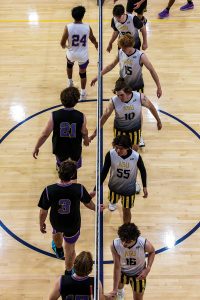
According to the UREC website, there are 26 recognized club sports teams: seven men’s, nine women’s and10 “co-rec” teams. Some of the teams available for students to join include men’s club baseball, women’s field hockey, “co-rec” cycling and more.
Intramural Sports
Intramural sports programs offer students opportunities to be active in a social and competitive environment without the same time commitment as club sports. Students are able to join multiple intramural sports teams and leagues and don’t have to pay membership fees to participate.
“Intramurals are free to play and offer friendly and competitive leagues to choose your competitive experience,” Sippel wrote.
Intramurals offer several different types of leagues for participants, each based on how intense the action is. While club sports are the most competitive, intramurals offer elite leagues designed for advanced players who want to experience the highest level of competition intramurals have to offer. There are also competitive and friendly leagues which tone down the intensity so that intermediate, beginner or casual players can still have fun.
Most intramural sports also have a variety of leagues and divisions, including men’s, women’s, open and student organizations.
“The Intramural Sports Program offers league sports which are played on a one game per week schedule, as well as tournaments throughout the semesters,” Sippel wrote.
The calendar of current and upcoming sports offerings, as well as registration to join a team or league, can be found on the “Intramural Sports” header of the UREC website.
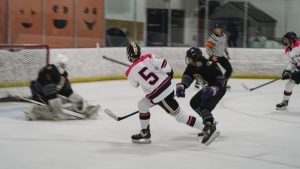
Several popular intramural sports available in the fall include 2v2 pickleball, 7v7 flag football, spikeball, slow pitch softball, indoor soccer and indoor volleyball. Starting in the spring, Frisbee, 5v5 basketball, 5v5 NFL flag football and other sports will be available, Sippel wrote.
UREC also offers tournaments for billiards, cornhole, dodgeball and several others.
Ethan Miller, a sophomore building sciences major, and AJ Williams, a freshman electronic media broadcasting major, are two students who play men’s intramural basketball. Both gave glowing reviews of their time on the court competing with their friends.
“My experience was wonderful,” Miller wrote in an email. “Some games can be fun and not serious at all depending on the other team, but some games can bring back the ‘high school’ feeling of being very intense and coming down to the wire. The energy is high and the games are super competitive, but at the end of the day, we are there to have fun.”
Basketball has been a part of Williams’ life for a long time, and it was that connection to the sport that led him to start an intramural team and make life-long friendships.
“‘The love of the game’ would be a simple way to say why I wanted to join, and why I’m going to come back,” Williams wrote in an email. “Basketball has been there out of everything in my life, no matter what the situation is or was.”
Williams wrote he became best friends with his teammates, most of whom he didn’t know prior to competing with them. He wrote that by doing something as simple as playing a sport, you can make new connections.
At the core of their experiences is meeting new people and enjoying an active lifestyle, which Sippel echoed.
“It is a great chance for students to be involved in the App State community and meet new friends,” Sippel wrote. “It is a way to exercise and compete in your favorite sport, or learn a new sport.”
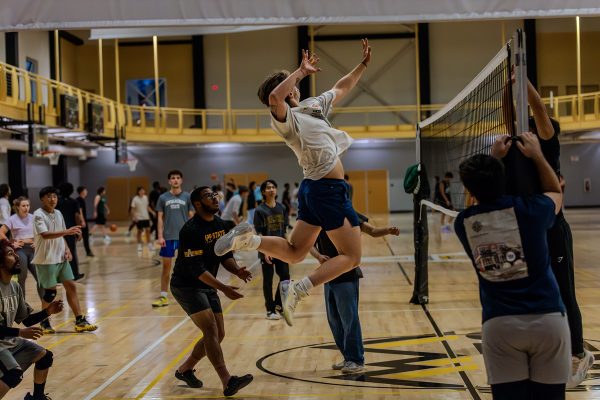
A great way for students to learn more about club sports and join a team is by visiting Club Expo on Aug. 17 in Holmes Convocation Center. For students interested in joining intramurals, they can create a team with their friends on IMLeagues or, if they don’t have enough people to make a team, can mark that they are interested in free agents to join.
Additionally, students can attend the Welcome to App Week events on Sanford Mall during the first week of classes to get additional information about the sports programs offered at App State.
Students interested in employment opportunities connected to club and intramural sports can apply to become an intramural official or a supervisor for club sports and intramurals. Administrative positions that oversee the teams are also available. Information about how to apply can be found on the “Sports Positions” tab of the UREC website.
Students looking to get involved in club and intramural sports, whether it be playing or working, can explore the UREC website or contact Sippel with any questions.
College Sports
NCAA Gymnastics holds judges accountable for inaccurate scoring. Could their system be used for MLB umpires?
Baseball and gymnastics: Two sports that couldn’t be more different. Yet both sports have recently seen a similar trend in how the effects of relying on human judgement can impact competitive outcomes and fan frustrations. NCAA women’s gymnastics is perhaps the sport that’s benefitted the most from the Name, Image, and Likeness (NIL) policy change […]

Baseball and gymnastics: Two sports that couldn’t be more different. Yet both sports have recently seen a similar trend in how the effects of relying on human judgement can impact competitive outcomes and fan frustrations.
NCAA women’s gymnastics is perhaps the sport that’s benefitted the most from the Name, Image, and Likeness (NIL) policy change that now allows collegiate athletes to profit from endorsements and sponsorships. Unlike in baseball where players have the potential to make money for a decade or more, the window of opportunity for gymnasts to earn money doing their sport is significantly smaller. Previously, the top gymnasts in the country typically competed for the national team at world championships or the Olympics between the ages of 16-19, and often had to make the difficult decision to relinquish their NCAA eligibility in favor of signing sponsorship deals. With the change to the NIL policy, those elite gymnasts no longer have to make a choice.
Advertisement
While correlation does not equate to causation, this influx of top international competitors also aligned with a widespread tendency towards inconsistent judging and leniency for certain schools and athletes. In the same way that an established All Star pitcher like Zack Wheeler might benefit from a slightly larger strike zone compared to a rookie, a former world championship or Olympic team member might get fewer deductions based on their reputation alone. This culminated in programs with multiple former national members seeming to get undeservedly high team scores and preferential treatment from judges.
Regardless of if the change in consistency was an unconscious attempt to reward those athletes and programs perceived as “better,” or even just a coincidence entirely, it led to an outcry from fans for the Women’s Collegiate Gymnastics Association (WCGA) to address the obvious issues with judging very similar to how baseball fans are now begging MLB to address its umpiring issue.
Whether baseball or gymnastics, it’s important to recognize that no judge or umpire is perfect and that human error will always play a factor in sports competitions, especially those with subjective components to them. But when blatant errors and inconsistent leniency are left unaddressed and allowed to continuously impact games and competitions, it becomes a fundamental flaw in the system.
Here’s how the WCGA has started to address that flaw:
Advertisement
Ahead of the 2024-2025 collegiate season, the WCGA announced new changes to the gymnastics scoring system and process. Among the changes included a new eight-person panel that evaluates the accuracy of each individual judge’s scores– essentially, a group of judges who judge the judges. Each individual gets scored against an “ideal” and is rewarded points for their accuracy, while also being deducted points for egregious errors. These points are then used to rank the judges, with the highest rated individuals favored to receive future postseason assignments. The evaluations are also used to provide targeted education to all judges regarding common errors and other issues.
It would definitely be possible for Major League Baseball to adopt this type of checks-and-balances system to oversee its umpiring. Similar to the WCGA’s system, a team of officials could be tasked with reviewing individual performances by umpires and rating their accuracy. Top performers could be rewarded with postseason assignments, while poor performers could be required to attend additional training or even face demotion to the minors. With actual rewards and consequences at stake, this could be a first step towards holding umpires accountable for their performance.
There are, of course, challenges to this type of system. With almost 400 meets in the collegiate gymnastics season, that equates to approximately 20,000 routines to be reviewed. And with an average of about 300 pitches thrown in each of the 2,430 MLB games per regular season, that comes out to nearly 800,000 pitches – and that’s just for the home plate umpire, that doesn’t even take into consideration calls made in the field. Creating a system to sample a database that large and provide accurate feedback for as many umpires as possible would not be an easy task. But, it wouldn’t be impossible.
The social media account “Umpire Scorecards” has already developed a way to determine strike zone accuracy and consistency, and identify impactful missed calls. Take the scorecard from this past Monday’s game against the Reds for example. Of the 125 called balls and strikes (256 pitches total) this system identified 15 that were inaccurate, giving home plate umpire Alfonso Márquez an 88% accuracy rating and an overall bias of +0.25 runs in favor of the Phillies. If each game produced an average of even double that at 30 calls for review, that would come out to about 73,000 reviews per season. That’s a far more reasonable task, especially for an organization with the resources to hire the required personnel.
It’s not a perfect system, by far. But what WCGA has implemented at least shows a willingness to take that first step in addressing the flaws of a human-based judging system. With a similar issue facing them, MLB should take notes.
College Sports
NCAA expands collaboration with Team IMPACT
Story Links The NCAA and Team IMPACT, a national nonprofit that matches children facing serious illnesses or disabilities with college sports teams, today announced a strategic collaboration that will foster long-term relationships between collegiate student-athletes and youths to inspire and promote belonging, empowerment and resilience. The collaboration will expand Team IMPACT’s reach, bringing […]
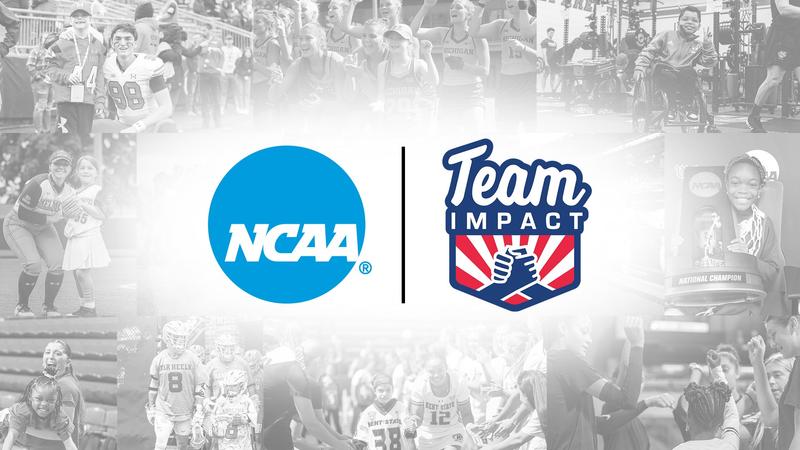
The NCAA and Team IMPACT, a national nonprofit that matches children facing serious illnesses or disabilities with college sports teams, today announced a strategic collaboration that will foster long-term relationships between collegiate student-athletes and youths to inspire and promote belonging, empowerment and resilience.
The collaboration will expand Team IMPACT’s reach, bringing its life-changing model to more families and NCAA student-athletes in all three divisions, while helping each child feel supported and allowing every team to discover a greater purpose. The NCAA and Team IMPACT will expand opportunities for children who will be matched with college sports teams at various NCAA championships to support the children’s well-being and enrich the lives, community activism and leadership of student-athletes.
Team IMPACT’s program is built on a clinical foundation, creating a personalized game plan for each child’s therapeutic journey and social-emotional development. In addition, the organization equips student-athlete leaders with resources throughout the experience, which educates them about the program and what to expect from the experience. The joint effort with the NCAA will offer strength, connection and hope to children and student-athletes alike.
“This collaboration reflects the very best of college sports — using athletics and community to make a meaningful difference in the lives of the children, their families and student-athletes,” NCAA President Charlie Baker said. “Team IMPACT’s work changes the outlook for the children and transforms the student-athletes who welcome them. I have been fortunate enough to meet with coaches and student-athletes alike who are involved in the program, and the feedback is incredible. Student-athletes are learning about empathy, civic duty and a different type of resilience while giving back in their communities. We are incredibly proud to support this mission and help bring it to more teams across the country.”
“This collaboration with the NCAA is a powerful validation of Team IMPACT’s model and the work we have been doing for over a decade to leverage the power of team to change lives,” said Krissie Kelleher, CEO of Team IMPACT. “Together, we will be able to reach more families and children who need hope, connection and strength, while giving student-athlete leaders a profound purpose beyond the game. We believe that every child navigating serious health challenges deserves a team and, with the NCAA as our teammate, we are closer to making that vision a reality.”
The NCAA community engagement unit will coordinate the efforts with Team IMPACT. NCAA and Team IMPACT staff have had the opportunity to meet and strategically align both brands in an effort to create a positive experience for everyone involved.
“We look forward to working with the staff at Team IMPACT in this new NCAA community engagement collaboration to create meaningful, life-changing experiences for the participating children and college teams at NCAA championships and events,” said Felicia Martin, NCAA senior vice president of inclusion, education and community engagement. “We believe this relationship with Team IMPACT will further the personal growth and leadership of our NCAA student-athletes, who are role models on their campuses and in their communities.”
With over 1,100 current NCAA teams now partnered with Team IMPACT, this collaboration presents an enhanced platform to significantly broaden outreach, engage diverse audiences and foster opportunities to positively influence families and college communities across the nation. Notably, Team IMPACT’s influence extends beyond the numbers, as surveys of participating student-athletes reveal that their involvement with these children has notably enhanced their mental health and overall well-being. In an era where mental health awareness is increasingly pivotal within collegiate athletics, this initiative underscores a proactive approach to addressing this pressing concern.
Since its inception in 2011, Team IMPACT has facilitated over 4,000 matches between children and teams across more than 800 colleges and universities. While the organization has previously partnered with individual schools, this expanded collaboration across all NCAA divisions marks a pivotal step forward, aimed at enhancing and broadening supportive team environments nationwide. Beginning in the 2025–26 academic year, Team IMPACT and the NCAA will launch coordinated initiatives and engagement strategies to further amplify their impact and reach within college communities.
College Sports
Rebeca Andrade extends gymnastics break through 2025 World Championships
Rebeca Andrade will extend her break from gymnastics competition through this October’s World Championships, according to media in her native Brazil. “I’m resting,” Andrade said in a video interview with Globo, according to a translation. “It’s been really important to me. It was something I’ve wanted for a long time, but I understood my priorities. […]

Rebeca Andrade will extend her break from gymnastics competition through this October’s World Championships, according to media in her native Brazil.
“I’m resting,” Andrade said in a video interview with Globo, according to a translation. “It’s been really important to me. It was something I’ve wanted for a long time, but I understood my priorities. So I ended up pushing it forward. But today is wonderful for me.”
Advertisement
Andrade, 26, won four medals in Paris, including floor exercise gold, to reach six career Olympic medals, the most by a Brazilian in any sport.
She is expected to return to competition in 2026.
“The whole team felt it wasn’t the best time to take her off this cruise ship we’re on, and she’s doing very well,” her coach, Francisco Porath Neto, said in a Globo video interview, according to a translation. “Then, in 2026, we have very important commitments. Olympic qualification starts to count.”
Andrade’s absence means that none of the 2024 Olympic women’s all-around medalists will compete this season.
Advertisement
Andrade, who won all-around silver in Paris, has repeated over the last year that she doesn’t plan to continue competing in the all-around when she does return, eschewing floor but keeping the other three events.
Gold medalist Simone Biles and bronze medalist Suni Lee are on indefinite breaks from competition and have not announced whether they plan to return for an LA 2028 bid.
This October’s worlds in Jakarta, Indonesia, include individual events only, as is typical in the year after the Olympics.
The four U.S. women who will compete at worlds will be named at a selection competition in early autumn. The all-around winner at that event automatically gets a spot.

Hezly Rivera
Hezly Rivera adds U.S. all-around gymnastics title to her Olympic gold medal
Hezly Rivera, the youngest 2024 U.S. Olympian, is the youngest U.S. all-around champion since 2017.
College Sports
The Eagles Host Stonehill Thursday to Begin New Campaign
CHESTNUT HILL, MASS. – Boston College women’s soccer opens its 2025 campaign Thursday night, hosting Stonehill at the Newton Soccer Complex with kickoff at 7:00 p.m. on ACCNX. This will be the first-ever meeting between the two teams. BC plays five of its first eight matches in Newton. YEAR IN REVIEW• Boston College is coming […]

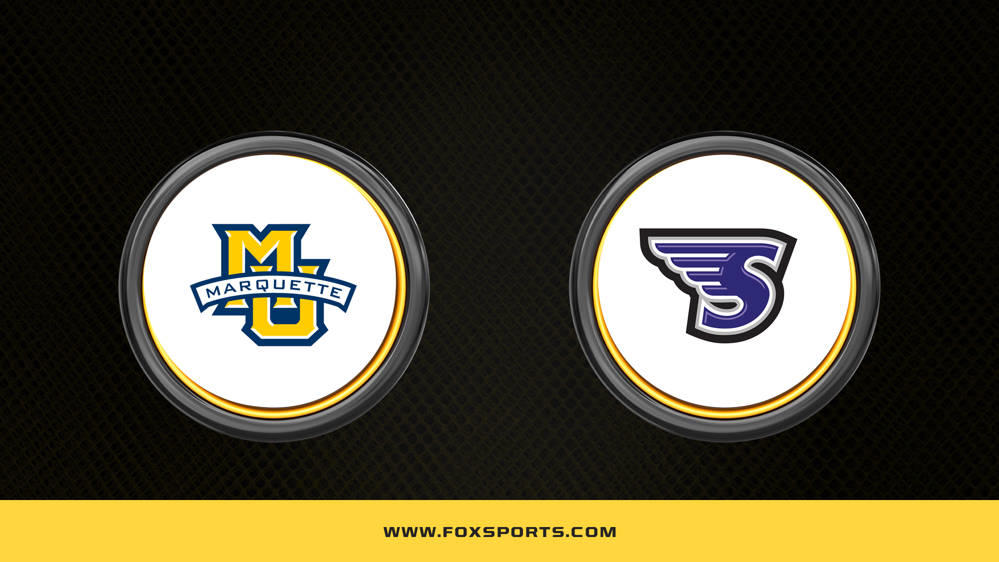

CHESTNUT HILL, MASS. – Boston College women’s soccer opens its 2025 campaign Thursday night, hosting Stonehill at the Newton Soccer Complex with kickoff at 7:00 p.m. on ACCNX. This will be the first-ever meeting between the two teams. BC plays five of its first eight matches in Newton.
YEAR IN REVIEW
• Boston College is coming off a 12-5-2 season in 2024 with a 4-4-2 record in ACC play
• The Eagles earned wins in league play against Virginia, NC State, Miami and Syracuse while picking up non-conference victories over Merrimack, Jacksonville, Gardner-Webb, LIU, Dartmouth, Cornell, Cal State Fullerton and Grambling State.
• Three different Eagles scored at least five goals throughout the season. Ava Lung recorded five, Paige Peltier had six and Aislin Streicek led the team with seven goals.
A WIN ON THURSDAY WOULD…
• Give Boston College a 1-0-0 record on the year
• Give the Eagles its second straight season-opening win
A LOOK AT THE OPPOSITION
• Stonehill is coming off a 8-10-1, 7-2-1 year in 2024.
• The senior forward Hannah Anselmo was named to the United Soccer Coaches 2025 NCAA Division I Forwards to Watch List.
• The Skyhawks were slotted to finish fifth in the 2025 NEC Women’s Soccer Preseason Coaches’ poll.
• This will be the first contest of the season for Stonehill.
UP NEXT
• BC hosts FDU on Sunday at 1:00 p.m. at the Newton Soccer Complex.
-

 Technology2 weeks ago
Technology2 weeks agoAlly Runs New Game Plan in WNBA All-Star Rookie Debut
-

 Health2 weeks ago
Health2 weeks agoThe Women Driving A New Era In U.S. Ski & Snowboard
-

 High School Sports3 weeks ago
High School Sports3 weeks ago100 days to men's college basketball
-

 NIL2 weeks ago
NIL2 weeks agoESPN Announces 'dont wait run fast' by mgk as New College Football Anthem for 2025
-

 College Sports3 weeks ago
College Sports3 weeks agoCity rows to sporting destination goal on boats of new complexes & old strengths
-

 Sports3 weeks ago
Sports3 weeks agoNtekpere honored as Second Team Academic All-American | APG State News
-

 Health3 weeks ago
Health3 weeks agoTrump administration investigates Oregon's transgender athlete policies
-

 Rec Sports1 week ago
Rec Sports1 week agoSwimming & Diving Comments on the Rules – 2025-26
-

 Technology1 week ago
Technology1 week agoAmid Sports Chaos, ‘Known’ Data and Outcomes Help Agency Win
-

 Sports3 weeks ago
Sports3 weeks agoMore State Schools of the Year





























